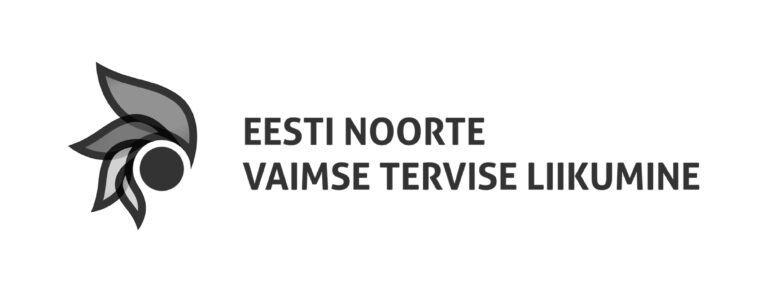Life is about making crucial choices. The choices you make today will affect the rest of your life: your health, your relationships, your work and your career. In Estonia, drugs are banned by law, but Estonia nevertheless stands out in the European Union for having higher than average drug use rate among 15–16-year olds. We shall now talk about why these drugs are dangerous.
Young people are more likely to become addicted to drugs, and the younger they are, the more this will damage their body (especially their brain).
The frontal and parietal lobes of the brain, which are responsible for the ability to analyse, empathise and exercise self-control, develop particularly rapidly between the ages of 12 and 25. Drug use interferes with the development of these parts of the brain and impairs the skills we need most in today’s society – memory and the ability to think and learn. As the part of the brain responsible for exercising self-control is still developing in young people, the risk of becoming addicted is many times higher than in adults. Drug dealers know this and target young people as their victims in an attempt to build a steady client base.
The actual composition and purity (strength) of drugs is rarely precisely known.
Drugs are illegal substances that are not controlled by anyone and have no guarantees. While there is always someone who will claim that “this substance is absolutely pure” or “other people tried it and nothing bad happened”, it is impossible to find solid proof for such claims. Regardless of their claims, dealers themselves do not usually know exactly what they are selling. Instead of cannabis, synthetic cannabis is sold, whether intentionally or unintentionally, carfentanyl is sold instead of fentanyl, etc. As a result, many young people have ended up in hospital and adults have died from overdose.
A drug dealer’s goal is not to do you a favour, but to make money.
A drug dealer’s aim is to build up a loyal clientele and to secure a steady income. Dealers themselves are sometimes drug users and do this to finance their own addiction.
Tobacco and alcohol users are more likely to turn to drugs.
Smoking creates a perfect basis for smoking drugs, since a smoker has already learned the habit of inhaling a substance. Smoking provides a good base for smoking cannabis. In turn, smoking cannabis can lead to the use of other substances. While not all cannabis users will progress to other drugs, practically everyone who injects fentanyl has started with cannabis.
Taking several substances at the same time or in succession is dangerous.
Mixed drug use of any kind means much higher risks. For example, combining different stimulants, i.e. substances that accelerate the body’s functions (energy drinks, ecstasy and amphetamines) places a very heavy strain on the body, especially the heart. This can result in intoxication, dangerous dehydration and overheating, which can lead to sudden cardiac arrest. The combined use of different depressants, i.e. substances that slow down the body’s functions, such as alcohol, heroin, fentanyl, cannabis, sleeping pills and antidepressants, can lead to extreme cardiac deceleration, respiratory arrest and even coma or death. However, using drugs that speed up and slow down the central nervous system in parallel can have unpredictable consequences and it can be very hard for doctors to help.
You will never know in advance how drugs can affect your life.
Drugs affect each individual differently. The effects depend on genetics, health and emotional state. It is best not to even try them in the first place. While not everyone gets addicted, only you will know how your body will react once you have taken drugs. One thing is certain: no drug addict ever planned to become an addict – in the beginning, everyone felt confident that they were in control.
Today, drugs are more powerful.
For example, cannabis contains significantly more of the addictive substance THC now than it did in the 1970s, thus increasing the risk of addiction. There are also increasingly concentrated forms of fentanyl, known as analogues, on the market, as well as purer forms of cocaine. All of this greatly increases the risks associated with drugs, including the risk of overdose.
It is illegal to drive a vehicle while under the influence of drugs, or to get into a vehicle whose driver has taken drugs.
The risk of having an accident while intoxicated is very high. You would thus put your own life and health and those of others at risk. The use of cannabis products strongly affects a person’s coordination, perception, alertness and awareness. Studies show that after consuming 20 mg of THC (one average joint of cannabis), the ability to keep a vehicle on a straight course is as poor as it is with a 1 percent blood alcohol content.
Drug addiction is a lifelong condition.
Drug addiction is one of the most serious illnesses imaginable. Although addiction can never be completely cured, it is still possible to live and enjoy a drug-free life. The sooner a person gets help or realises he or she needs help, the more effective the treatment.
Assistance for children and young people
Children and young people who have been exposed to drugs can get help from mental health centres, counsellors and group therapy, as well as from the treatment and rehabilitation centre for children and young people with addiction problems. When children and young people have problems, counselling and support is also offered to family and friends.
See more here.
Prepared by the youth information portal Teeviit based on source material from the National Institute for Health Development www.narko.ee.
The National Institute for Health Development is a public research and development institution which conducts research on public health, disease prevention programmes and activities and promotes health.
This article is published on the youth information portal Teeviit in 2022.







